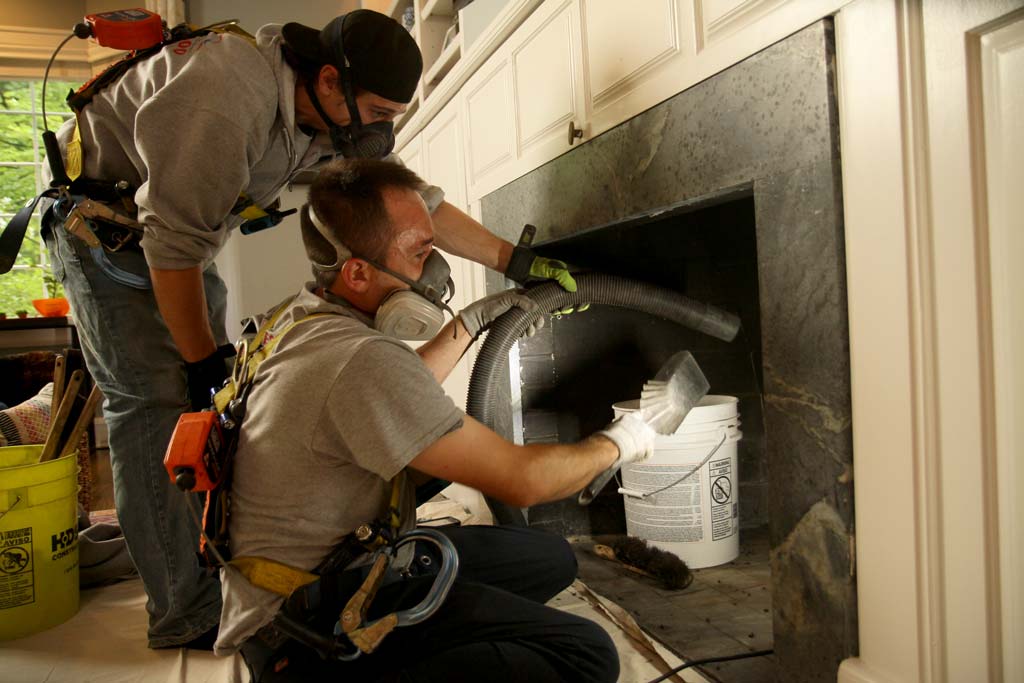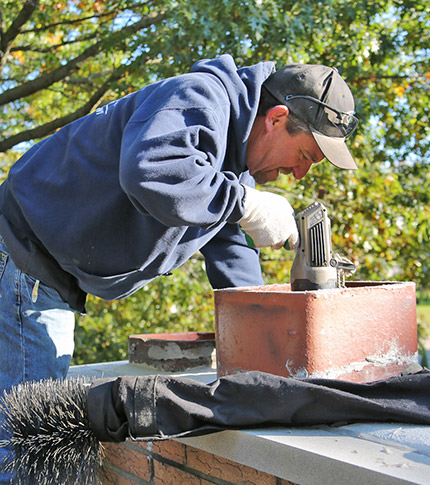Experience the Distinction: Chimney Clean San Jose for a Cleaner, Safer Home
Experience the Distinction: Chimney Clean San Jose for a Cleaner, Safer Home
Blog Article
Chimney Cleaning: A Step-by-Step Overview to Maintaining a Healthy Fireplace
Normal smokeshaft cleansing is a vital part of this upkeep routine. By adhering to these standards, you will discover just how to gather the required devices, carry out a visual examination, clear debris and build-up, sweep the smokeshaft, and finish the final steps for recurring upkeep.
Gathering the Needed Tools
To begin the process of chimney cleansing, the first step is to collect all the required devices. Having the right tools at hand makes sure a safe and efficient cleaning process. The essential tools for smokeshaft cleansing consist of a chimney brush, a ladder, drop fabrics or plastic sheets, a flashlight, handwear covers, and a dirt mask.
The chimney brush is the main device utilized to remove soot and creosote buildup from the flue - Chimney Sweep San Jose. It is important to pick a brush that matches the dimension and form of your chimney.
A flashlight is important for inspecting the smokeshaft's inside for any indications of damage or obstructions. Handwear covers are required to protect your hands from residue and various other unsafe compounds, while a dirt mask assists prevent the breathing of particles.
Carrying Out an Aesthetic Assessment

Using a flashlight, very carefully analyze the interior walls of the smokeshaft for any type of signs of damages, such as cracks, loose bricks, or mortar damage. These problems can jeopardize the smokeshaft's architectural stability and present a major safety and security threat. Additionally, look for any kind of indicators of water damage, such as discoloration or efflorescence, as this can indicate a leaking chimney cap or flashing.
Next, check the smokeshaft flue for any type of obstructions. Search for the presence of nesting products, leaves, or debris that might have accumulated with time (Chimney Sweep San Jose). These obstructions can limit air movement, enhance the danger of carbon monoxide accumulation, and hinder the smokeshaft's capability to successfully vent smoke
Throughout the aesthetic examination, pay attention to the chimney crown, which is the leading surface area that protects the chimney from wetness. Try to find fractures or missing items in the crown, as these can enable water to get in the smokeshaft and cause significant damage.
Clearing Up Debris and Build-up
After completing the visual evaluation, the following step in smokeshaft cleaning includes clearing debris and build-up to make sure the proper performance of the fire place. In time, particles such as fallen leaves, branches, and pet nests can accumulate in the chimney, obstructing the flow of air and creating prospective fire hazards. Furthermore, the accumulation of creosote, a tar-like compound, is a common problem in smokeshafts. Creosote is created when wood or fossil gas are burned, and otherwise removed frequently, it can cause chimney fires.
To get rid of particles and build-up, it is necessary to utilize the right devices and strategies. A chimney brush, particularly developed for this purpose, is used to eliminate loosened particles and creosote from the chimney walls. It is necessary to choose a brush that matches the dimension of your smokeshaft to guarantee effective cleansing. Prior to starting the cleansing process, see to it to cover the fireplace open up to protect against particles from falling under the area.
To begin, place the brush right into the chimney and relocate up and down, rubbing the walls to remove any kind of debris or creosote. Use a sweeping activity to make sure complete cleaning. It is recommended to begin with all-time low and function your means up. When the cleaning is complete, make use of linked here a vacuum or a chimney brush extension to remove the dislodged particles from the fireplace.

Brushing Up the Chimney
The sweeping of the chimney is a critical step in keeping a healthy and balanced fire place. With time, soot, creosote, and various other debris can build up in the smokeshaft, blocking the circulation of air and possibly triggering a harmful accumulation of combustible products. Routine chimney sweeping not only guarantees appropriate ventilation but likewise avoids the danger of chimney fires.
When it comes to smokeshaft sweeping, it is extremely suggested to employ an expert smokeshaft sweep. These experts have the understanding and devices necessary to safely and efficiently get rid of the accumulated debris from your chimney.
It is necessary to keep in mind that the regularity of chimney sweeping depends upon numerous variables, such as the kind of gas utilized, the amount of usage, and the kind of chimney. As a general general rule, it is advised to have your smokeshaft brushed up and examined at the very least when a year.
Last Steps and Maintenance
After completing the smokeshaft sweeping process, the initial step in the last upkeep is to check the chimney cap and trigger arrestor. These components stop particles, pets, and rain from going into the chimney.

Inspect the within the fire place for any type of indicators of wear and tear, such as fractures, loosened bricks, or harmed mortar. These issues can impact the structural honesty and security of the fireplace. Seek advice from a specialist smokeshaft sweep or mason to resolve them promptly. if any kind of problems are discovered.
Finally, take into consideration mounting carbon monoxide detectors near the fire place and throughout your home. These devices can identify the existence of this dangerous gas, giving a very early warning system in instance of a chimney malfunction. Frequently examine and change the batteries in these detectors to ensure their efficiency.
Conclusion
In conclusion, adhering to a step-by-step overview for smokeshaft cleaning is vital in preserving a healthy fire place. By gathering the essential devices, performing a visual examination, removing particles and accumulation, and brushing up the chimney, home owners can make sure the safety and efficiency of their fireplace. Regular maintenance and cleansing will assist prevent chimney fires and boost air quality in the home. It is necessary to prioritize smokeshaft cleaning as a part of overall home upkeep.
The vital devices for smokeshaft cleaning include a smokeshaft official site brush, a ladder, decline towels or plastic sheets, a flashlight, gloves, and a dust mask.
A smokeshaft brush, especially designed for this function, is used to eliminate loose debris and creosote from the chimney wall surfaces. Routine smokeshaft sweeping not just makes certain you can try here appropriate air flow but likewise stops the danger of chimney fires.
When it comes to smokeshaft sweeping, it is highly recommended to work with a professional smokeshaft sweep. After finishing the smokeshaft sweeping procedure, the initial action in the last maintenance is to examine the chimney cap and trigger arrestor.
Report this page